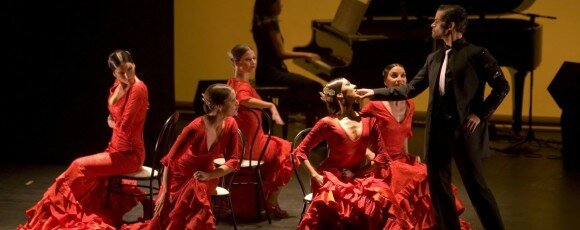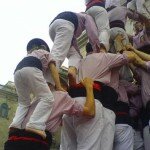
Two very different Spanish cultural expressions have been declared a World Heritage by Unesco this week: Flamenco and Castells. No one received money for this declaration but it does accentuate the fact that both form a unique part of Spanish culture.

Flamenco as an art form emerged in the 18th century in Southern Spain and represents a mix of the different cultures that travelled and settled in this part of the world. The main proponents of Flamenco were (and still are) artists of gypsy descent who combined song, dance and music into the mesmerizing art that it has become today. Flamenco used to be frowned upon in Spain by the well to do bourgeoisie but is considered a form of “high art” these days by everyone with a heartbeat.
Songs of happiness, sadness and devotion to God are wrapped in a unique way that make for a heartfelt emotional journey for anyone in the audience. Worldwide interest in Flamenco has grown significantly in the last 30 years and the artistic scene is flourishing like never before in Spain but also in the United States and Japan where this art form is very popular.
More information about learning Spanish + Flamenco in Sevilla
 Slightly more obscure but no less impressive are the so-called Castells of Catalonia. A Castell is a human tower of up to 10 (!) layers of people. This tradition is around 200 years old and particularly strong in rural Catalonia. At social and cultural events you are likely to find one or more “colles” (associations of castellers, there are around 60) constructing different shapes of human towers.
Slightly more obscure but no less impressive are the so-called Castells of Catalonia. A Castell is a human tower of up to 10 (!) layers of people. This tradition is around 200 years old and particularly strong in rural Catalonia. At social and cultural events you are likely to find one or more “colles” (associations of castellers, there are around 60) constructing different shapes of human towers.
Thousands of people on town squares watch in awe as the human towers get build. Casualties are rare and most colles now oblige the younger participants (sometimes not older than 7 years) to wear a helmet as they climb like agile monkeys up to 16m height.
More information about learning Spanish in Barcelona



